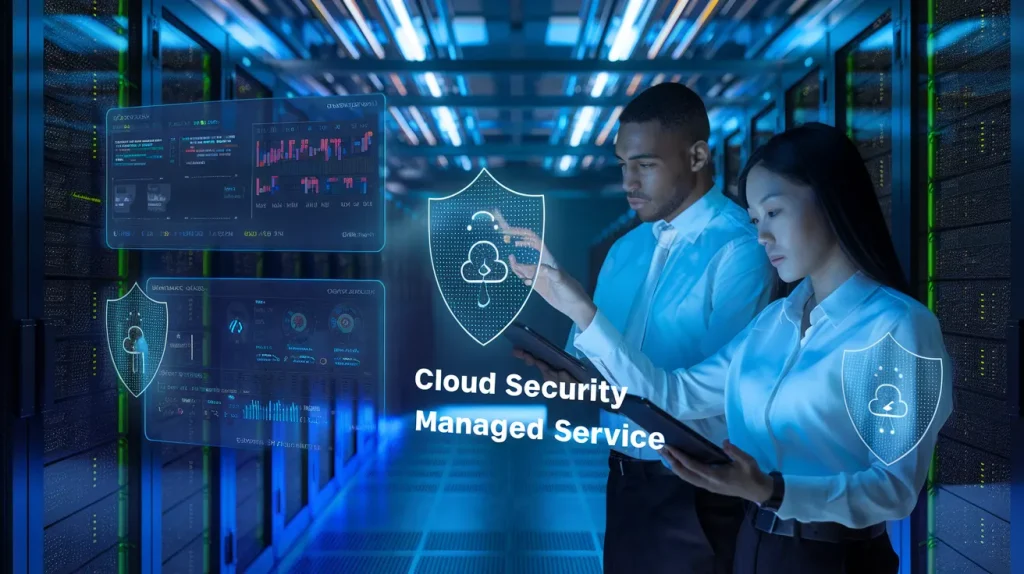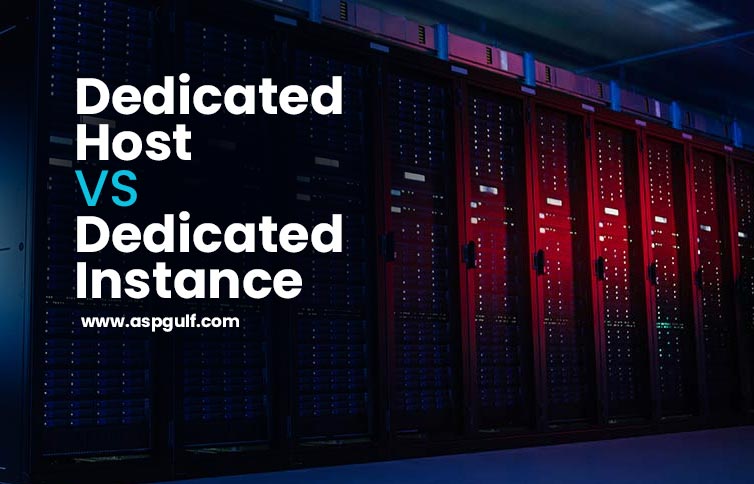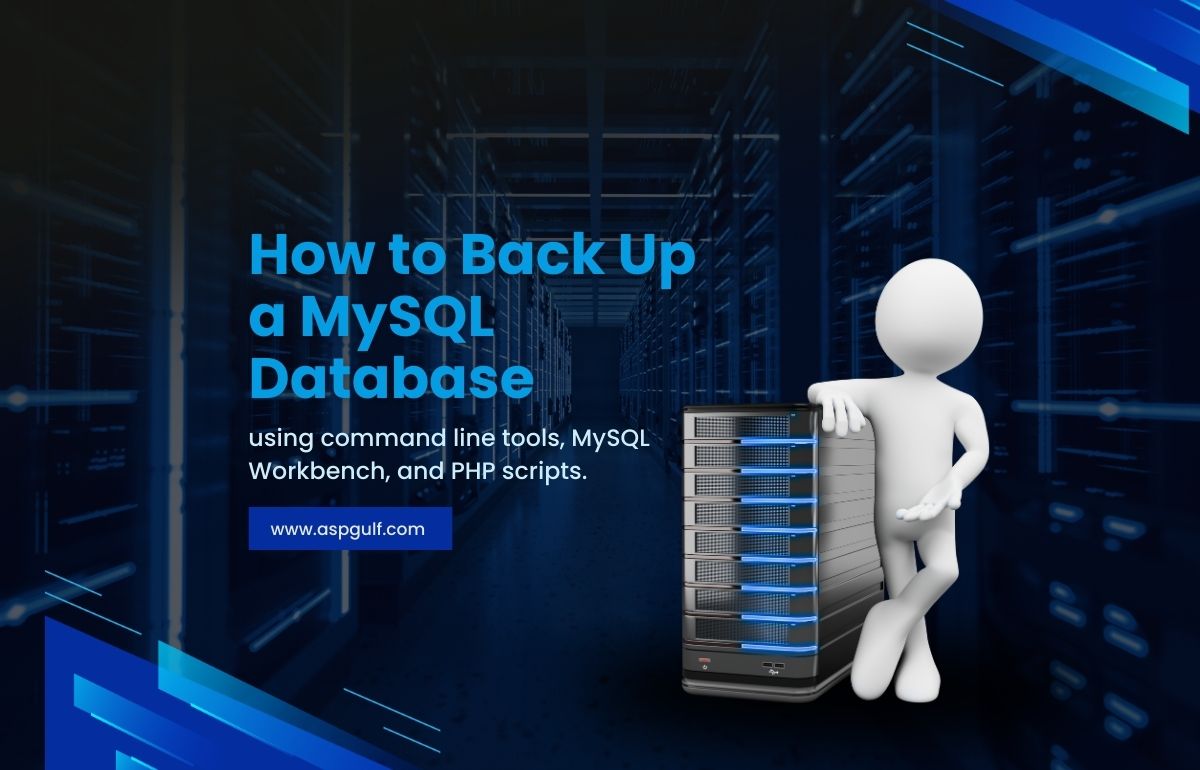Cloud Security Managed Service: Safeguarding Your Digital Transformation

In today’s rapidly evolving digital landscape, organizations face an unprecedented challenge: securing complex hybrid cloud environments against increasingly sophisticated cyber threats. As businesses accelerate their digital transformation journeys, traditional security approaches are proving inadequate against the mounting wave of attacks targeting cloud infrastructure. According to the X-Force 2025 Threat Intelligence Index, these threats continue to evolve at an alarming rate, leaving many organizations vulnerable despite their best efforts.
Enter Cloud Security Managed Services – a comprehensive approach that combines 24/7 expert monitoring, advanced threat detection, and specialized security management to protect your most critical assets. Leading providers like IBM are revolutionizing how organizations approach security, offering tailored solutions that function as an extension of your existing team while providing specialized expertise across threat management, cloud security, and identity access management. Rather than struggling to build and maintain these capabilities in-house, forward-thinking organizations are partnering with security specialists to strengthen their security posture while focusing on their core business objectives. In this article, we’ll explore the essential components of modern cloud security services, how to select the right provider, real-world implementation strategies, and emerging trends that will shape the future of cloud security management.
Understanding Cloud Security Managed Services
Definition and importance in hybrid cloud environments
Cloud security managed services involve outsourcing critical cloud protection tasks to specialized third-party providers who handle essential security functions such as threat detection, compliance reporting, and incident response. These services have become increasingly important in hybrid cloud environments where organizations utilize a mix of public, private, and on-premises infrastructure.
As modern cloud infrastructures evolve rapidly, maintaining visibility and effectively managing misconfigurations becomes progressively challenging. This is particularly true for organizations scaling their operations across multiple cloud vendors. Managed cloud security services leverage cloud-native tools to provide continuous monitoring across these multi-cloud environments, addressing the widening gap between cloud adoption rates and internal security capabilities.
These services are designed to protect cloud workloads and applications against sophisticated threats while ensuring data security across diverse geographic locations. In hybrid environments, they offer enhanced visibility and access management that would otherwise be difficult to maintain with in-house resources alone.
Key benefits of 24/7 monitoring and management
One of the core advantages of cloud security managed services is continuous 24/7 monitoring and management. This round-the-clock vigilance includes:
- Real-time threat detection: Security providers analyze telemetry from various sources to identify threats and anomalies as they emerge
- Automated response: Immediate mitigation of risks through automated security protocols
- Continuous vulnerability scanning: Regular assessment of systems to identify and address weaknesses
- Compliance monitoring: Ongoing checks to ensure adherence to regulatory requirements
The 24/7 monitoring approach minimizes human error through regular assessments while optimizing internal resources. This continuous oversight translates to improved accuracy through encryption and authentication protocols, robust disaster recovery capabilities, and proactive risk mitigation against emerging cyber threats.
Many providers integrate with platforms like Cloud-Native Application Protection Platform (CNAPP) to unify security capabilities, offering comprehensive protection with real-time alerts for misconfigurations and regular compliance checks.
Extended-team approach to enhance existing security frameworks
Cloud security managed services function as an extension of an organization’s security team, enhancing rather than replacing existing security frameworks. This approach allows companies to choose between:
- Fully managed models: Ideal for smaller businesses or those new to cloud security, where providers handle all security operations
- Co-managed models: Suited for larger enterprises with established security teams that require specialized external support
The extended-team approach shifts organizational focus from mundane security tasks to critical security priorities. It centralizes security control for easier management of vulnerabilities while providing the flexibility to scale security operations based on evolving needs.
By integrating with existing workflows, managed security services facilitate shift-left security practices by incorporating security measures early in development processes. This collaborative approach ensures that organizations maintain control over their data management and security policies while benefiting from specialized expertise.
With this foundation in understanding cloud security managed services, let’s explore the Core Capabilities of Modern Cloud Security Services to gain insight into the specific features and functionalities that these services provide to protect your cloud infrastructure.
Core Capabilities of Modern Cloud Security Services
Now that we’ve established a foundation in understanding cloud security managed services, let’s explore the essential capabilities that define today’s leading offerings. Modern cloud security services have evolved significantly to address the increasingly sophisticated threat landscape in multicloud environments.
Comprehensive Threat Management for Critical Asset Protection
Modern cloud security platforms like Microsoft’s Defender for Cloud have developed risk-driven approaches that integrate automation across the entire security ecosystem. These platforms now incorporate advanced capabilities such as code reachability analysis, which significantly enhances risk prioritization by identifying truly exploitable vulnerabilities within an application’s specific context. This innovation allows security teams to focus remediation efforts on actual threats rather than theoretical vulnerabilities, dramatically improving efficiency and resource allocation for critical asset protection.
Managed Detection and Response for Endpoint Security
The integration of extended detection and response (XDR) capabilities within cloud security platforms has transformed endpoint protection. Defender for Cloud, for example, now enables near real-time detection of threats across cloud workloads. These platforms offer enhanced response actions that facilitate rapid remediation, allowing security analysts to isolate or terminate compromised systems effectively. New monitoring and forensics capabilities provide detailed insights into potential attacks, particularly for container environments, ensuring comprehensive endpoint security management.
Specialized Solutions for Hybrid Cloud Infrastructures
Today’s cloud security services are designed to accommodate the complexity of hybrid environments. Google Cloud’s portfolio of sovereign solutions demonstrates this adaptability, offering options like the Google Cloud Air-Gapped solution for sectors with stringent security realization requirements. These specialized solutions operate independently from external networks and utilize open-source components for enhanced resilience. Additionally, platforms now feature expanded API security management capabilities, enabling teams to visualize API flows across hybrid infrastructures and strengthen data protection throughout the ecosystem.
Identity Access Management Systems
Modern cloud security platforms place significant emphasis on identity and access management as a cornerstone of protection. Google Cloud’s Data Boundary exemplifies this approach, enabling clients to meticulously manage their data’s storage and processing locations. These systems incorporate client-side encryption options, ensuring that data access remains tightly controlled. User Data Shield further enhances security by validating customer applications through continuous testing and verification, establishing multiple layers of protection for sensitive information.
With these core capabilities clearly defined, selecting the right security service provider becomes the next critical step in establishing a robust cloud security posture. The provider you choose must offer these essential capabilities while aligning with your organization’s specific security requirements and compliance needs.
Selecting the Right Security Service Provider
Now that we’ve explored the core capabilities of modern cloud security services, it’s crucial to understand how to select the right provider for your organization’s specific needs. The market is dominated by major players like AWS, Microsoft Azure, and Google Cloud Platform, but choosing the right security service provider requires careful evaluation beyond market share.

Cloud Hosting
Cloud Hosting – Scalable, Secure, and Cost-Effective! Get Started Today!
Essential Criteria for Evaluating Managed Security Services
When selecting a cloud security managed service provider, several critical evaluation criteria should be considered:
- Security Standards and Certifications: Look for providers with recognized ISO certifications that demonstrate adherence to industry security standards.
- Physical Security and Data Location: Assess the physical security measures at provider data centers and understand where your data will be stored, especially if your organization faces regional compliance requirements.
- Historical Performance Metrics: Review the provider’s track record of uptime, reliability, and past security incidents or data breaches.
- Disaster Recovery Capabilities: Evaluate the provider’s disaster recovery processes to ensure business continuity in case of unexpected events.
- Third-Party Risk Management: Understand how the provider manages relationships with their own vendors and third parties that might access your data.
Understanding Service Level Agreements and Coverage
Service Level Agreements (SLAs) define the quality of service and responsibilities between your organization and the cloud security provider:
- Clearly Defined Responsibilities: Understand the shared responsibility model for your selected service type (IaaS, PaaS, or SaaS) and ensure the SLA clearly outlines who handles what security aspects.
- Coverage Scope: Ensure the SLA covers incident response times, availability guarantees, and remediation processes.
- Migration Support: Confirm what assistance is available for transitioning to their services and potential exit strategies to avoid vendor lock-in.
- Communication Transparency: The SLA should outline how and when the provider will communicate about security incidents, maintenance, and updates.
Importance of Industry Recognition and Leadership
A provider’s standing in the industry can be a significant indicator of their reliability and effectiveness:
- Market Position: Leading providers like AWS (34% market share), Azure (21%), and GCP (11%) have established reputations, but emerging providers like Linode, Cloudflare, and DigitalOcean may offer cost-effective alternatives with specialized services.
- Specialized Expertise: Consider providers with specific strengths that align with your needs, AWS for reliability and scalability, Azure for integration with Microsoft products, or GCP for advanced machine learning capabilities.
- Innovation Track Record: Evaluate how providers are advancing their security offerings with automation tools and emerging technologies.
With this comprehensive evaluation framework in mind, next, we’ll explore how the right security service provider can strengthen your organization’s overall security posture through implementation strategies and ongoing management.
Strengthening Organizational Security Posture
A. Developing continuous improvement processes
Security isn’t a one-and-done deal. The most resilient organizations know this truth: you’re either getting stronger or falling behind.
What does continuous improvement actually look like for cloud security? It’s about creating feedback loops that actually work. Start with regular security assessments, not those dusty annual reviews nobody reads, but dynamic evaluations that happen quarterly or even monthly.
The magic happens when you connect your security metrics to business outcomes. When the C-suite sees how improved cloud security directly impacts customer trust and revenue, those budget conversations get a whole lot easier.
Here’s what works:
- Running tabletop exercises that simulate real attacks
- Tracking remediation times and celebrating improvements
- Creating cross-functional security champions who spread awareness
- Documenting “lessons learned” after every incident, no matter how small
The organizations crushing it at cloud security treat their security practices like code, constantly testing, refining, and deploying improvements.
B. Implementing strategic security frameworks
Frameworks aren’t just for compliance checkboxes. They’re your security roadmap.
The top cloud-ready frameworks provide structure without suffocating innovation:
| Framework | Best For | Key Advantage |
|---|---|---|
| NIST CSF | Enterprise environments | Comprehensive risk management |
| ISO 27017 | Multi-cloud setups | Cloud-specific controls |
| CIS Controls | Resource-constrained teams | Prioritized, high-impact actions |
But here’s what nobody tells you, customization is critical. Take these frameworks and adapt them to your specific cloud environment. The companies seeing the best results tailor their approach based on their actual threat landscape, not some generic template.
Your framework should evolve as your cloud footprint changes. When you add new services or enter new markets, your security strategy needs to flex accordingly.
C. Utilizing threat intelligence to anticipate emerging risks
The reactive security model is dead. Today’s cloud security leaders are using threat intelligence to see around corners.
Think about it, wouldn’t you rather know about a new attack technique before it hits your systems?
Smart organizations are tapping into multiple intelligence sources:
- Industry-specific threat feeds that highlight relevant attacks
- Dark web monitoring for leaked credentials
- Vulnerability databases with cloud-specific exploits
- Peer intelligence sharing groups where real practitioners swap notes
The real differentiator is contextualizing this intelligence. Generic threat feeds are just noise unless you can quickly determine: “Does this actually matter to our environment?”
Organizations crushing their cloud security establish clear processes for converting threat intel into action. They’re tracking emerging attack patterns in containerized environments, zero-day exploits in cloud services, and supply chain weaknesses in their SaaS providers.
This forward-looking approach doesn’t just prevent breaches, it fundamentally shifts your security posture from defensive to strategic.
Real-World Implementation and Results
Now that we’ve explored how to strengthen organizational security posture, let’s examine real-world applications and tangible outcomes of cloud security managed services through practical examples and financial considerations.
Cost Implications of Security Breaches vs. Preventive Measures
Implementing robust cloud security measures represents a significant investment, but one that pales in comparison to the potential costs of security breaches. As demonstrated in Accenture’s experience, transitioning to a comprehensive cloud security framework actually resulted in cost reductions compared to their legacy infrastructure models. This illustrates a crucial point: integrating security from the outset of cloud adoption is not just a technical necessity but a financial imperative.
Preventive security measures offer substantial return on investment. The financial services company highlighted in our reference implemented AWS security solutions like Network Firewall and comprehensive IAM frameworks as preventive measures. These investments facilitated regulatory compliance with standards like GDPR and PCI DSS, thereby avoiding potential non-compliance penalties while simultaneously protecting sensitive customer data.
Case Studies of Successful Cloud Security Management
Accenture’s Cloud Security Transformation
Accenture’s six-year cloud journey demonstrates the evolution of cloud security management from traditional on-premise models to sophisticated cloud-native approaches. Their implementation strategy featured:
- A software-defined security approach tailored specifically for cloud environments
- AI-driven behavioral analytics for anomaly detection
- Establishment of a zero-trust framework treating all components as untrusted
- Identity-centric access verification methods
This comprehensive strategy yielded measurable improvements in their security posture while supporting cost efficiencies.
Financial Services Defense-in-Depth Strategy
A financial services organization successfully implemented a Defense in Depth strategy on AWS, showcasing how cloud security managed services can address complex security and compliance requirements:
- Deployed AWS Network Firewall for enhanced perimeter security
- Implemented comprehensive IAM with multi-factor authentication
- Utilized AWS Key Management Service for rigorous data encryption
- Established continuous monitoring through Amazon CloudWatch and AWS CloudTrail
- Streamlined compliance processes using AWS Config and Audit Manager
The outcomes included improved protection against unauthorized access, streamlined compliance processes, enhanced operational resilience, and better incident preparedness.
Strategic Partnerships for Enhanced Security Solutions
Both case studies emphasize the importance of strategic partnerships in cloud security management. Accenture specifically highlighted their shared responsibility model with major cloud vendors like Microsoft, Amazon, and Google. These partnerships enabled them to:
- Leverage established security certifications from major cloud providers
- Access innovative security solutions through cloud-native services
- Develop specialized expertise aligned with specific cloud platforms
The financial services company similarly benefited from strategic integration with AWS security services, demonstrating how close collaboration with cloud providers enhances security outcomes through specialized tools and expertise.
With these real-world implementations in mind, next we’ll explore the future trends in cloud security management, including the evolving role of artificial intelligence, zero-trust models, and emerging technologies that will shape the cloud security landscape in the coming years.
Future Trends in Cloud Security Management
Having examined real-world implementations and their tangible results, it’s clear that cloud security practices continue to evolve rapidly. As we look toward the horizon, several significant trends are emerging that will shape the future of cloud security management.
Evolving Threat Landscape and Response Strategies
The cloud security landscape is becoming increasingly complex, necessitating comprehensive security frameworks rather than isolated solutions. By 2025, we’re witnessing a significant shift toward zero-trust security models, particularly driven by the rise in remote work environments. Organizations are moving beyond traditional perimeter-based approaches to adopt more dynamic and context-aware security postures.
Chief Information Security Officers (CISOs) are taking on enhanced roles within organizations, reflecting the growing strategic importance of cloud security. This evolution coincides with an increasing demand for greater visibility into cloud security practices, as stakeholders require clearer insights into how their data and applications are protected.
Innovations in Security Technology and Methodologies
Artificial intelligence and machine learning stand at the forefront of cloud security innovations, enabling proactive threat detection, predictive analytics, and automated responses to security incidents. These technologies are proving invaluable for identifying anomalies in API usage and addressing the complexities introduced by serverless architectures.
Security automation is optimizing efficiency across cloud environments by streamlining vulnerability management and incident response processes, significantly reducing the burden on security teams. This is particularly important as organizations adopt cloud-native security solutions designed to seamlessly integrate with cloud platforms, improving scalability and API security.
Other notable technological advancements include:
- End-to-end encryption ensuring data confidentiality during transfer and storage
- Advanced identity and access management (IAM) implementing multi-factor authentication and role-based access control
- Security mesh providing unified visibility across multi-cloud environments
- Cloud Access Security Brokers (CASBs) enforcing security policies between users and cloud services
Building Internal Security Expertise Alongside Managed Services
As cloud security managed services become more sophisticated, organizations are recognizing the importance of developing internal expertise. Employee education on shared responsibilities in cloud security is becoming a priority, ensuring that all team members understand their role in maintaining a secure environment.
The integration of security into DevOps processes, often referred to as DevSecOps, is embedding security throughout the application lifecycle. This approach ensures that security considerations are addressed from the earliest stages of development rather than being an afterthought.
Organizations are implementing robust identity and access management systems while maintaining continuous monitoring practices. Data encryption and regular backups continue to be fundamental components of comprehensive security strategies, complementing the advanced capabilities offered by cloud security managed services.
As the cloud security landscape continues to evolve, organizations must remain vigilant and adaptable, continuously enhancing their security posture to address emerging threats while leveraging innovative technologies and methodologies to protect their valuable data and infrastructure.
Securing Your Future in the Cloud
As organizations continue to navigate the complexities of hybrid cloud environments, implementing a comprehensive cloud security managed service has become not just advantageous but essential. From threat management that safeguards critical assets to specialized identity access management and robust incident response capabilities, these services provide the around-the-clock protection modern enterprises require. By carefully selecting the right security service provider with proven expertise, like those recognized by industry analysts, organizations can significantly strengthen their security posture while maintaining operational efficiency.
Looking ahead to the future of cloud security management, we can expect even more sophisticated integration of AI-driven threat intelligence, such as insights from the X-Force Threat Intelligence Index, to stay ahead of emerging threats. Whether you’re just beginning your cloud security journey or looking to enhance existing frameworks, now is the time to explore comprehensive managed security services that align with your specific needs. Consider scheduling a personalized briefing with security experts to evaluate how your organization can benefit from these evolving capabilities and ensure your digital assets remain protected in an increasingly complex threat landscape.



